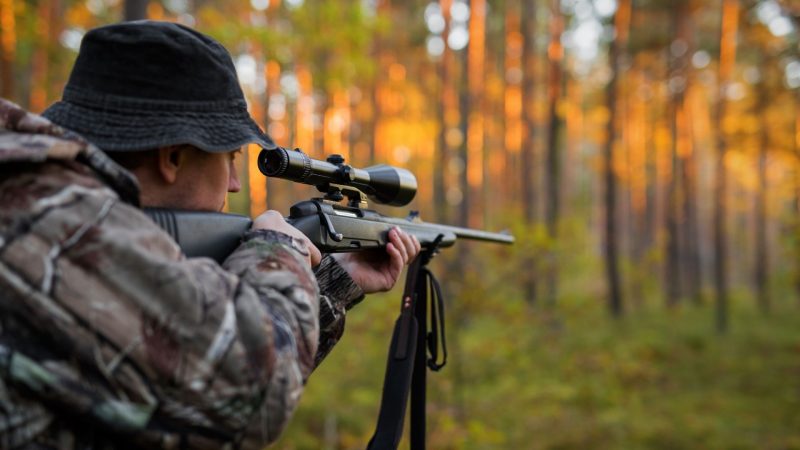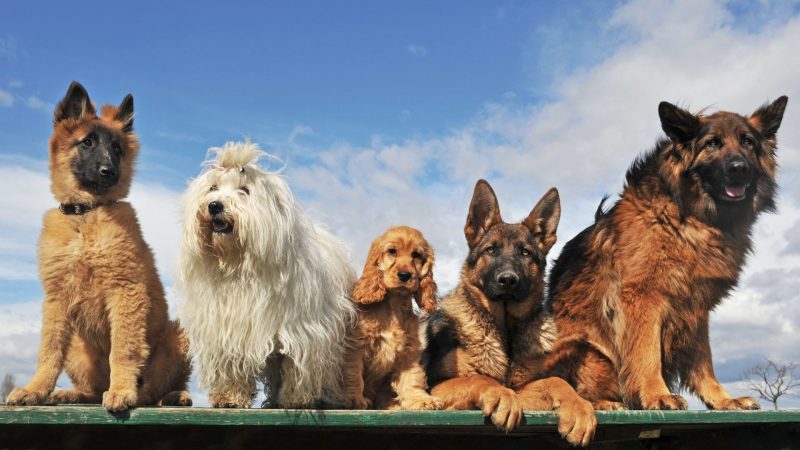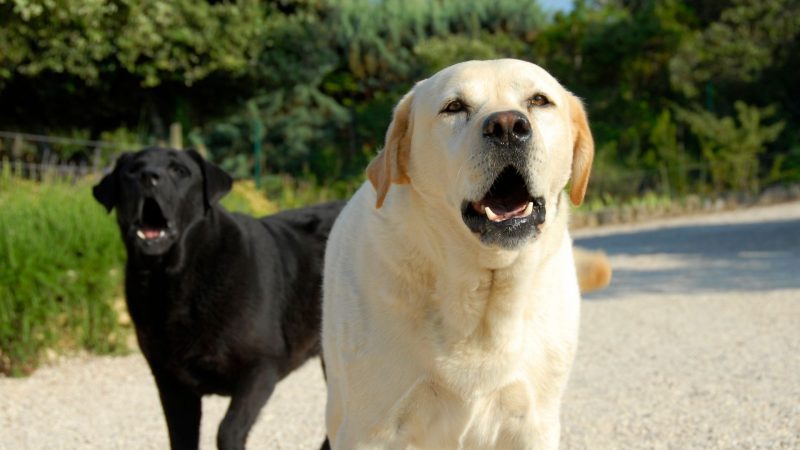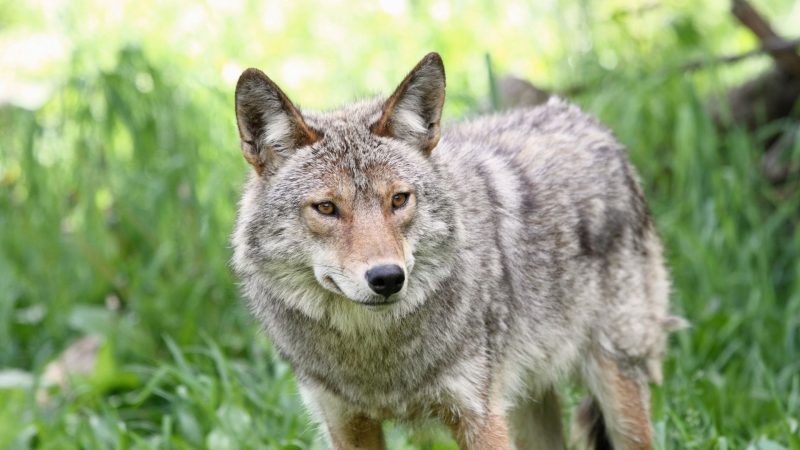Coyotes are wild animals. However, the encroachment of habitats has resulted in the coexistence of humans and coyotes, which in turn prompted frequent encounters. In most cases, coyotes have been declared as nuisance wild animals known to attack domesticated animals and livestock and cause severe damage to properties.
Can you shoot a coyote if it attacks your dog? Although it is legal in some states to trap and hunt coyotes in private properties and designated hunting sites, firearm restrictions would prohibit any person from shooting a coyote near public or residential areas.
Habituation of coyotes to humans has caused these animals to lose their fear of people and exhibit bolder behavior. This occurrence has also led to an increased presence of coyotes, especially in urban and suburban areas. Thus, it is important to be aware of measures on how to manage coyotes in your locality.
Is It Legal to Shoot Coyotes?

Several states such as Indiana, Texas, Connecticut, North Carolina, South Carolina, and Kansas allow hunting and trapping coyotes found within private properties and designated hunting areas.
Depending on state laws, securing a hunting license or permit may or may not be mandatory. Nonetheless, hunters are required to comply with local laws and regulations when hunting coyotes.
In addition, shooting coyotes is also considered a form of lethal removal, which aims to eliminate certain populations that are causing disturbance to local communities and posing threats to humans and other domesticated animals.
In such instances, most states would permit only trained professionals or licensed individuals to shoot coyotes, whereas other states do not have such restrictions.
Why Would You Shoot a Coyote?
The most common reasons for shooting coyotes include:
- Hunting, as a form of recreational activity.
- Removal of problems, as coyotes preying on domesticated animals and livestock, causing damage to private properties, and posing a threat to human safety.
What Size of Dogs Will a Coyote Attack?

Coyotes are known to attack both small and large dogs. Small dogs are potential prey of coyotes, while huge dogs are viewed as threats to their territories, especially during the breeding season. In fact, coyotes may attack small dogs even in the presence of their owners.
In both cases, it is critical not to leave dogs unattended and to keep them on a leash, no longer than six feet, when going outdoors. A six-foot leash would provide enough freedom for dogs to move while at the same time keeping them close.
How to Protect Your Dog From Coyotes?
Pet owners may employ the following practices to protect their dogs from coyotes:
- If possible, always feed your pets indoors. Leftover pet food would attract coyotes within your area. If in case feeding your dog outside is unavoidable, make sure to remove uneaten food immediately.
- If your dog spends a significant amount of time in your yard, it would be best to install a coyote-proof fence.
- When walking your dog, always accompany them and keep them on a leash not longer than 6 feet, especially when passing areas known to be frequented by coyotes. Conflicts would also be reduced by having full control of your dog.
- If a coyote gets too close, either pick up your dog (small) or pull your large dog closer to you, haze the coyote or change your route to avoid possible conflict.
- If the sighted coyote is displaying threatening or aggressive behavior, report the incidents to concerned departments or local officials.
Do Barking Dogs Scare Coyotes?

Dogs will bark at coyotes as a defensive response or as a way of signaling the coyotes to keep their distance. However, coyotes are not afraid of dogs. Rather, they are warier of the presence of humans; thus, if your dog barks at a coyote, make sure to keep them as close to you as possible to avoid conflict.
What to Do if You See a Coyote With Your Dog?
It is not recommended to walk your dog outside without a leash. In case your dog chases a coyote and they went out of your sight, it is best to report this incident to the authorities, as this is likely to result in a fight between these two animals.
What Do You Do if a Coyote Attacks You?
Never run away from a coyote. There are several things that you can do when you encounter a coyote:
- Make loud noises, e.g., shouting, clapping your hands.
- Make aggressive gestures, e.g., waving your arms, throwing sticks/stones, or any other objects.
- Maintain eye contact while moving towards populated areas.
If the coyote is exhibiting unusual behavior, immediately report the incident to the authorities.
Has a Coyote Ever Attacked a Child?
A considerable increase in the presence of coyotes in urban and suburban areas has prompted an increase in encounters with these wild animals. In some cases, these counters have resulted in attacks on humans, both adults and children.
In California, 165 coyote attacks on humans were documented from 1977 through 2015. Of these cases, 64 are attacks on children ages ≤10. In other localities, incidents were reported with small children that were left unattended.
Children are more at risk of serious injury or death as their play, and running behavior might serve as a trigger for a coyote to attack.
Can You Shoot a Coyote in City Limits?
In most cases, local ordinances would prohibit discharging a firearm within cities in consideration of public safety.
Can You Shoot Coyotes at Night?
In most states in the US, coyotes can be hunted both day and night. Although such is the case, laws and regulations on the night-shooting of coyotes vary. While most states prohibit the use of artificial lights, others would allow such equipment provided that the hunter possesses a license and that hunting occurs in a registered property.
Can You Shoot a Coyote in Your Yard?

Year-round hunting of coyotes is legal in private properties and registered areas for hunting. However, state laws and local ordinances would prohibit firing a gun within certain distances from a residential area.
In this case, certain precautions should be taken to ensure that coyotes will stay out of your yard:
- Do not leave your pets unattended, especially when feeding them outdoors.
- Remove potential food sources such as pet food or leftovers, trash, and bird feeders.
- Make your yard unattractive by minimizing brush and woodpiles, which coyotes usually use to hide their presence.
- Install bright lights to deter coyotes during the night.
Can You Shoot a Coyote on Your Property?
Several states in the US allow people with valid hunting licenses or permits to hunt or shoot coyotes on private lands. In addition, shooting coyotes are also permitted, especially if these animals are causing a nuisance and damage to properties or if there is proof that coyotes are posing a threat to public welfare or safety.
What to Do With a Coyote After You Shoot It?
While eliminating coyotes is legal in most states and counties, appropriate disposal of the animal carcass is required. After a successful hunt, it is necessary to either bury these coyotes or leave them in the field hidden behind bushes.
In addition, dumping piles of carcasses along the side of the road is against the law, and violators might face littering charges. The proper way to dispose of huge numbers of coyote carcasses is to take them to a landfill.
What Are Coyotes Afraid Of?
Coyotes are known for their natural fear of humans. Yelling and throwing stones at coyotes are effective ways to scare them away. The use of sirens and strobe lights may also temporarily keep coyotes away.
Does Human Urine Keep Coyotes Away?
There is no scientific evidence or anecdotal accounts that would confirm that human urines can be used as a coyote deterrent.
Do You Report Coyote Sightings?
Simply seeing a coyote is not cause for alarm and should not be reported. Animal control offices or local police departments should only be contacted in cases where:
- Coyotes are exhibiting nuisance behaviors or causing property damage.
- They are exhibiting unprovoked aggression, causing threats to people or pets.
- Coyotes appear sick or injured or exhibiting unusual behavior indicative of rabies, such as partial paralysis, circling, staggering as if the animal is drunk or disoriented.
- Coyote carcasses weren’t disposed of properly.
What Time of Year Are Coyotes Most Active?
Coyotes are more active during the breeding season (between January and March) and pup-rearing season during the spring and summer months.
During these months, conflicts with dogs are more likely to occur since small breeds of dogs are potential prey for coyotes, while large dogs are seen as threats to their territories and resources.
Related: How to Keep Coyotes Away? | The Effective Guide
List of Sources
Coyotes. Indiana Department of Natural Resources.
Living With Coyotes. (2008). Town of Westport, CT.
Baker, R. Timm, R. (2017). Coyote Attacks on Humans, 1970–2015: Implications for Reducing the Risks. Utah State University.
- How to Get Rid of Copperheads | Practical Guide - August 27, 2023
- How to Get Rid of Corn Snakes | What Makes Them Aggressive? - August 27, 2023
- How to Get Rid of Alligators | Safety Measures and Removal Methods - July 16, 2023
